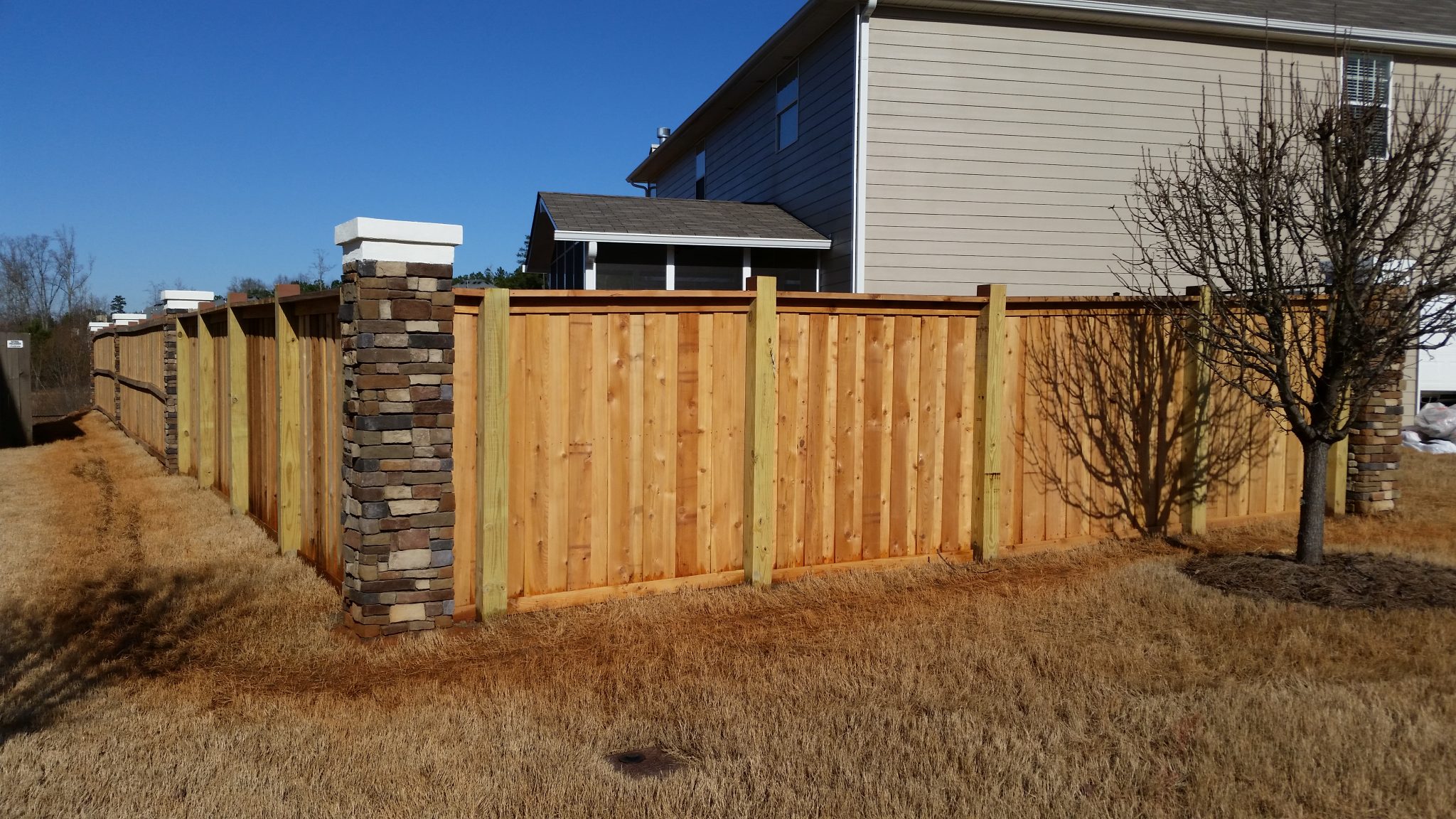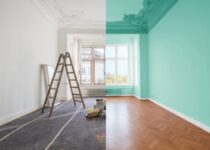Can you paint wet wood
You’ve cleared some time in your schedule to complete the painting project, but the weather hasn’t been on your side. Your task for the weekend was drenched due to the rain that occurred the night before. However, there is not enough time to follow the recommended course of action: to let the wood dry out. Today is the deadline for completing the task. Is painting freshly soaked wood even possible?
It is possible to paint wet wood, but doing so is not recommended. You may still be able to produce an end product of excellent quality by employing a few strategies to hasten the drying process while using the appropriate components.
Can You Paint Wet Wood with good results?
Yes, this is a valid question. Let’s have a look at some of the reasons why you may not want to.
There are various reasons to wait to paint wet wood until it has completely dried before doing so, and each of these should be carefully considered before beginning the painting process.
Let’s start with a look at the effects of precipitation on wood. Some of the fibres in the wood absorb water when it is wet. There will be fewer wood fibres available to absorb paint due to this. Several issues might arise as a result of this.
In the first place, if the wood is too wet, the application will be messy. After applying the paint to the wood, the paint will remain on the surface, creating an uneven finish that will quickly come off when dry. find out more about spray painting wood if are curious to know about it.

Paint may thin if wood moisture levels are high enough to react with it. As a result, there will be less covering and more drips and runs. Paint jobs may look more like washes after drying.
Wood that is even slightly moist will not absorb paint as thoroughly as wood that has been allowed to air dry. As a result, the finish’s durability will be compromised. Paint that is supposed to last ten years may begin flaking after only two years.
There are more factors to take into account. When painting damp wood, bubbles might form due to the paint interacting with the wood’s moisture.
Disintegration is more likely when the wood has been painted while still wet. Wood is protected from the weather by painting it.
This is a good thing for dry wood since it prevents moisture from getting into the wood.
Wet wood is unable to dry due to the presence of this barrier. The paint will act as a moisture trap to keep the wood from drying out. Eventually, the wood will rot from the inside out if moisture isn’t released.
Waiting for the wood to cure before painting seems logical, given the risks of painting damp wood. The paint’s endurance is substantially lessened when the wood is moist.
Even yet, there will be times when you have no choice but to follow through. Make sure you use techniques that can help mitigate these issues if this is the case.
Can You Paint Wet Wood In Simple Way
It’s possible to paint on wet wood, but first, you need to get a visual grasp of what you’re working with. It is possible to paint wet wood, but you should wait until it is scorched before applying the first coat of paint for various reasons, each of which should be carefully evaluated before applying the first coat of paint.
When the wood is wet, some of the fibres in the wood can absorb water. Because of this, fewer wood fibres will be available to absorb the paint that is applied. In the first place, the application is going to be a chaotic mess if the wood is already too wet.
A sloppy finish will be created by the paint lingering on the wood as you apply it, which will come off quickly when dry. As a result, there will be less covering and more drips and runs.
Paint jobs may look more like washes after drying. Wood that is even slightly moist will not absorb paint as thoroughly as wood that has been allowed to air dry. As a result, the finish’s durability will be compromised.
As a result, painting wet wood increases the risk of decay. Wood is protected from the weather by painting it. The paint will keep the wood moist if it is already damp. Eventually, the wood will rot from the inside out if moisture isn’t released.
What Kind Of Paint For Wet Wood
Any paint can be used to paint wet wood, even if the wood is still wet. Oil is not going to dissolve in water. Oil-based paint would not adhere to the wood because of the moisture in the wood. Because latex paint is water-based, it has a greater chance of sticking to the water in the wood than other types of paint.
This decreases the likelihood that the paint will peel. The wood could be irreparably damaged if an excessive amount of paint was applied all at once while it was still wet. When working with a foam brush, it is much simpler to regulate the amount of paint used for each stroke because of the brush’s texture.
What Paint Type Works Best for Damp Wood?
Painting wood requires careful consideration of the sort of paint to be used. Because you will be painting damp wood, latex paint is an absolute must.
Because latex paint is water-based, it is better at adhering to the wood’s natural moisture content than other paints. Reduces the risk of paint peeling. some people also prefer to use acrylics on wood if its indoor or semi outdoor area to get better finishes.
“Oil and water don’t mix,” as the saying goes, is why oil-based paint should never be applied to wet wood surfaces. Oil cannot be dissolved in water. Oil-based paint will not adhere to wood that has been damaged by dampness. In the end, the wood will be bare of paint.
It’s essential to consider the sort of brush you’re using when painting. With a foam brush, you may apply a thinner, more even covering since it contains less paint than a bristle brush.
Remember, you’ll be painting on wet wood, and wet wood does not absorb paint as well as dry wood. Using too much paint on a wet surface might result in a disaster. You’ll be able to control the quantity of paint you apply with each stroke with a foam brush.

How To Paint Wet Wood
Drying the wood, using a high-quality paintbrush, and getting the right paint are all necessary for a long-lasting paint job. In addition, painting wet wood helps to keep the paint from fading.
Tips for Cleaning and Preparing the Surface of Wood for Painting
The drying process may be sped up with several inventive approaches.
It is possible to dry wood by using a hairdryer. Use a hair dryer set to its highest setting to blow warm air over the wood. The moisture in the wood will evaporate due to the air’s movement, much like your hair does.
Using this method, you may quickly dry a little piece of wood. If you want to dry a fence or a deck, don’t use a hair dryer.
One approach for more significant works would be to dry and paint surfaces in little pieces, completing the process slowly and incrementally. In any event, it’s a risk that this will take longer than it’s worth. A hairdryer may be damaged due to this, making your situation worse.
Paper towels or an old towel can be used to dry the wood’s surface. Because it just removes water from the wood’s surface, this procedure is not as effective as the hair dryer method. Instead of using a blow dryer, you may use this to speed up the preparation process for painting.
Electric fans may also be used to dry wood for basic tasks. Place a fan next to the wood to expedite the drying process and direct the airflow straight onto the surface.
If you can work indoors, use a dehumidifier to remove moisture from the wood.
Consider stacking the boards with scrap lumber or furring strips to create gaps between the panels, which will enable airflow to dry the timber as quickly as possible.
Remember that time is the most excellent way to dry wood, no matter what method you employ. Even though these methods will assist in removing part of the wood’s moisture, they will not be sufficient to dry the wood completely. The best course of action is to wait for the wood to dry out on its own.
How To Check If Wood Is Well Dried to Paint?
Numerous factors must be taken into account when determining whether or not the wood is dry enough to be painted. Use the bead test to determine if the wood is too wet to paint. Add a few drops of water to the wood.
Beads indicate that the wood fibres reject water because they have been soaked with moisture. It will be tough to paint the wood in this situation. Most paints have a maximum moisture content of 16 per cent.

Procedure to Paint Wet Wood
There are several processes involved in painting wet wood. As an illustration, consider the following:
- Dry the wet wood as best you can. Paper towels or the methods outlined above can be used to dry damp wood thoroughly.
- Make sure to keep the fan running for as long as possible. This will speed up the drying process while there’s still time. Be sure to factor in the time it will take for the wood to dry completely before painting it.
- Look for signs of wetness. A moisture metre makes it simple to find how much moisture is in wood. In the last part, we went through the specifics of how to handle and take the reading.
- Evenly coat the board with the first layer of paint using a high-quality foam paintbrush. Allow enough time for the paint to dry before painting thoroughly.
- Apply a second application of colour to the area when the first one dries down.
- To achieve the most significant painting results, prepare your workplace while the second coat of paint is drying.
Conclusion
If you don’t have the time to wait for the wood to dry out, you won’t be able to paint the siding or deck if it’s wet. We are all aware that there are times when waiting for Mother Nature to cooperate is not a viable option.
You can still do a great job painting on damp wood by employing straightforward surface preparation methods and the appropriate supplies, but the finish won’t last as long as it would on a dry surface.
can you paint pressure treated wood with right methods in ideal conditions using right tools can be found in our guide for good quality paint job on your wooden items.

FAQ
-
Is painting on wet wood dangerous?
Painting over damp wood will keep it from drying out since the paint will hold on to the moisture. The wood will ultimately deteriorate from the inside out due to the trapped water. Given all of the probable dangers, it seems reasonable to wait for the wood to cure before painting it.
-
When it’s raining, how quickly can you paint wood?
The amount of time it takes for paint to dry depends on the type of surface you’re painting on. Wait at least 24 to 48 hours after a rainstorm before putting deck stains or other similar products on hardwood decks and surfaces.
-
Is it possible to paint on wet wood and get it to stick?
When painting damp wood, it is essential to use water-based paints because the paint will eventually peel off. You can get the optimum finish with latex paint since it adheres well to damp wood. Creosote, oil-based paints, and enamels all deteriorate with time.
-
Is it possible to estimate how long it takes to dry wet wood?
At least two weeks is required for the drying of wet wood. Drying times for wet wood are highly variable and rely on a variety of factors such as the size and moisture level of the wood as well as the climate. Wet woods with a high water content take a long time to dry off, especially in larger areas. This is because moisture has to travel a long distance to leave wet wood.

Being associated with art and craft field since decades as a hobbyist and life long learner has given me an opportunity to learn many new things related to art, craft, paints and pottery which i am trying to share with your guys on this website. I have expertise of being professional painter and potter for the last 20+ years
I have learned mind blowing cool tips and insights which makes me a person with ability to improvise and come up with creative ideas and solutions to make stunning and impeccable art pieces of all types which are adored by people across the globe on this website and other platform.


